The flesh-eaters form a large and important order of the mammals. They live, as their name indicates, entirely on the flesh of other animals. They are extremely fierce, strong, and swift, for they are hunters; andthey have teeth and claws for seizing and tearing their prey.
The animals of this order are usual l y arranged in groups, according tothe manner in which they walk.
The first group are the toe-walkers. These are well named, for they walk on their toes only ; the rest of the foot does not touch the ground. They include the various members of the cat and dog families. Among the cats arethe lion, tiger, leopard, panther, jaguar, puma, ounce, lynx, and our common domestic cat. The dog family includes the wolf, fox, and jackal.
The sole-walkers form the next group. They are distinguished from the group already mentioned by the form of the feet, and the use they make of them in walking. They plant the whole of the foot flat on the ground at each step. The bear, racoon, and badger families areincluded in this group.
There is a large group, known as the weasel family, which form a sort of link between the toe-walkers and the sole-walkers. They include the weasel, marten, sable, polecat, ferret, and stoat. Some of them are sole-walkers and some toe-walkers, but they are all distinguished byan unusual length of body and a shortness of legs as well as by their boldness, ferocity and agility. These fierce little creatures, many of themnot bigger than a rat, fearlessly attack animals of twenty time their size and strength.
Last among the flesh-eaters come the first walkers. These animals, which include the seal and walrus, find their food in the water, and spend a great part of theirlives in that element. Their limbs are short, and make admirable paddles for swimming, but their movements are very limited and awkward on land.
Leaving the flesh-eaters we come next to the gnawing animals. These live entirely on vegetable food, mostly roots and nuts and the bark of trees. They are distinguished by the peculiar form of their incisor teeth, which, in these animals, become four sharp chisels, specially adapted forgnawing their food. You remember, no doubt, that these teeth, formed as they are of the hard enamel outside, and the softer dentine beneath,are able by their own work of gnawing to keep a sharp cutting edge. The order is a very large and numerous one, and comprises morethan one-third of the mammalia. The rabbit, hare, mouse, rat, squirrel, dormouse, beaver, guineapig, and porcupine belong to this group.
The toothless animals form the next order. It is a small but very curious one, and the members of it are all foreign animals. It includes the anteater, sloth, and armadillo, and the curious duckbill of Australia. None of these animals have canine teeth; some have no incisors; others no teeth at all, hence their name.
They live on worms and insects, as well as slugs and other soft-bodied animals.
Lesson 33















